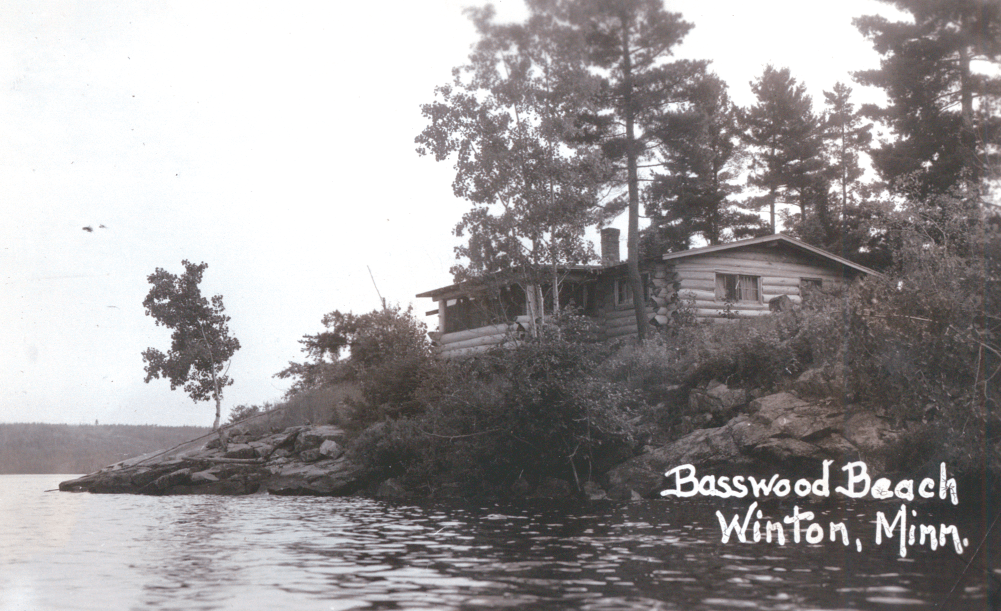
By Barbara Wenstrom Shank and William P. Wenstrom
Basswood Beach Resort was located on Basswood Lake, a U.S.-Canadian border lake in extreme northern Minnesota. Basswood Lake is in the heart of the Quetico (Provincial Park)-Superior (National Forest) area that consists of more than two million acres of mostly undeveloped boreal forest.
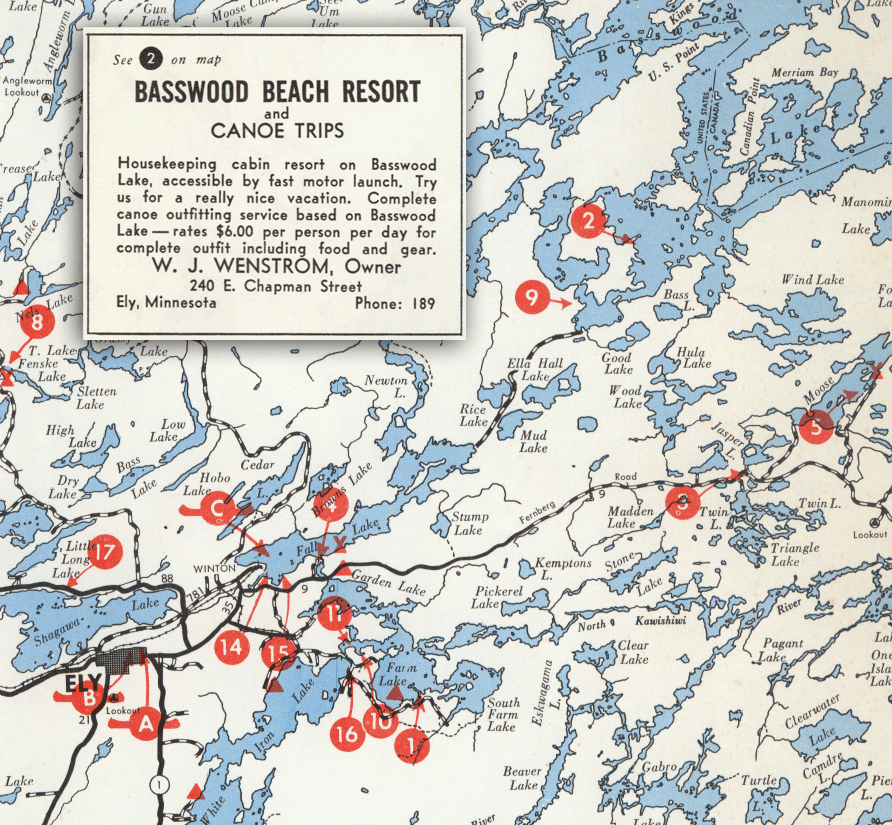
Basswood Beach Resort ad as appeared on the reverse side of a 1952 Superior National Forest and Quetico Provincial Park map published by W.A. Fisher Company, Virginia MN.
The Basswood Lake region, beginning with the early fur trades, was a center for Indian settlement, as well as fur trading posts. The early 1900s brought logging operations to the area, with the Four-mile Portage between Fall Lake and Basswood developed to accommodate transporting logs to mills in Winton, MN. The Four-mile Portage along with an ice road on Fall Lake and lower Basswood allowed the Basswood area to be used for summer and winter recreation. The ice road also allowed owners to restock bulky supplies like gasoline and propane in winter. As a result, more than twenty resorts, private cabins and other facilities became established on Basswood Lake beginning as early as the 1930s.
Basswood Beach: A Well Kept Secret
Nestled between Hubachek’s Wilderness Research Station to the south and Basswood Lodge to the north, you would have found Basswood Beach Resort and Canoe Trips operated by Bill and Lillian Wenstrom, lifelong residents of Ely, MN. The Associated Colleges of the Midwest also operated a summer field station featuring ecologically oriented courses on property adjacent to Basswood Beach during the 1960s. Among the historic lodges and other developments of the Quetico-Superior, Basswood Beach was a well-kept secret.
Historic Yes, Grand No
Basswood Beach Resort was not what one would call a ‘grand lodge’ that existed elsewhere on Basswood, Burntside, Snowbank or Crooked Lakes. Although grand in many ways, it was not the ‘elegant’ grand displayed by others. Rather, Basswood Beach was a fishing camp that consisted of eight cabins, one of which was the ‘Big Shack’ built by Bill himself in the 1930s for use as his and Lill’s personal residence.
Basswood Beach operated on a housekeeping plan at a rate of $50 per week for two plus $10 per week for each additional person. Thus, a family of four could vacation for a week for $70 in lodging cost or $2.50 per person per day. Each rustic cabin was equipped for independent living, most often by families or parties of fishermen vacationing during the summer. Each cabin had its own dock, outhouse, water pump, propane refrigerator, and electric lights from a common generator. Each was also provided with bed linens and bath towels. Lights typically were out by ten when Bill flipped the off switch!
Like visitors to Basswood Beach Report, canoeists brought only their personal clothing and other possessions and fishing gear. Basswood Beach provided each party, typically young men, with canoes, paddles, pack-sacks for portaging gear, a tent, sleeping bags and air mattresses, food selected from a pre-prepared list, and a complete camp kitchen including cookware and utensils.
Three of the seven cabins at Basswood Beach Resort were of hand-hewn logs; the others were of frame construction. Like the Big Shack, Bill and helpers built all. One log cabin, known as the ‘North Side’ was disassembled and reconstructed in the 1960s. It can be prominently seen today on the Echo Trail outside of Ely.
Basswood Beach’s 9.8 acres had two prominent features: over 900 feet of natural sand beach and a rocky ledge, know as Wenstrom’s Point, jutting out into the lake. The property had a variety of northern trees including pine, balsam, cedar, spruce, aspen, birch and some ash, making it an unusually attractive site. Getting to Basswood Lake took time and effort. From the dock landing in Winton, one took a launch across Fall Lake, bus transportation across the Four-mile Portage, and another launch on Basswood to the resort. It was a 13-mile journey from town to Basswood, taking generally two to three hours.
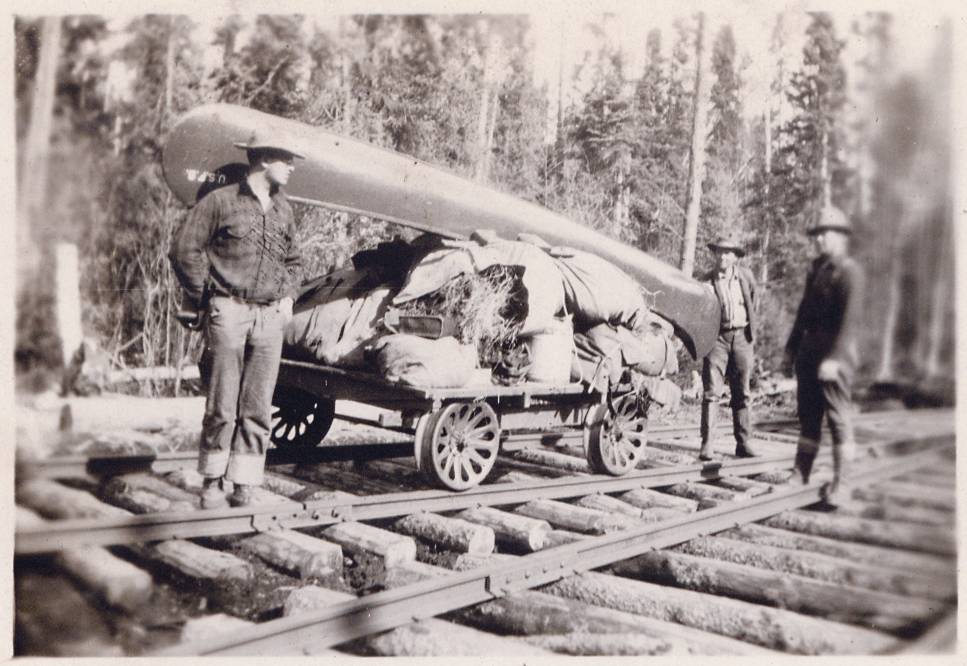
A Varied Clientele
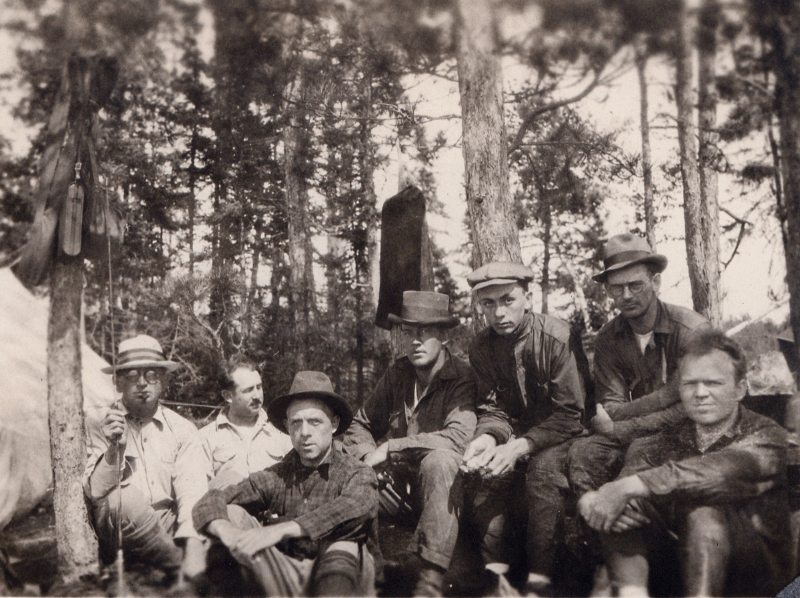
Working class folks mainly from the Midwest, Indiana, Illinois, and Ohio, and some hardy souls driving in from California, Kansas, Nebraska, Texas and Washington were the mainstay of this family business. It was particularly popular for family vacations with one of the finest sandy beaches on the lake. On Saturday morning, guests would gather at the Wenstrom home in Ely, welcomed by Lillian to enjoy coffee an’ (generally her homemade chocolate cake) while Bill filled their grocery orders at Bucca’s Grocery. During this time, the Basswood Beach ‘employees’, Pete and Barbie Wenstrom, were madly cleaning boats and cabins, making beds, and otherwise preparing for the incoming batch of guests who would arrive after lunch.
The Last Hold Out
President Lyndon B. Johnson signed the Wilderness Preservation Act of 1964 on September 3, 1964. Among other provisions the bill allowed the Federal government to acquire ‘in-holdings’ within other government land scheduled for designation as wilderness areas. An in-holding is private property within the boundaries of an otherwise established government tract such as the Superior National Forest. Accordingly, Basswood Beach Resort and other properties on Basswood Lake and elsewhere were condemned for Federal acquisition under eminent domain. With tenure from 1932 until 1967, Basswood Beach Resort was one of the first and last operating resorts on Basswood Lake.
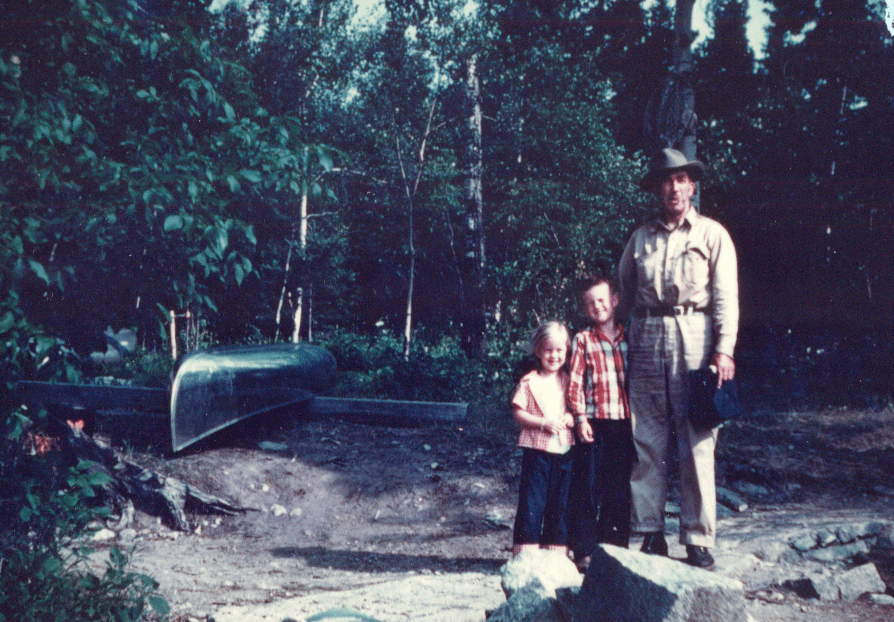
After the resort officially closed, Bill retained possession of one cabin for his personal use for seven years. The settlement agreement also required that for every additional year he continued to reside on the land, he would repay the government 2% of the price negotiated during the condemnation process. Bill and members of his family visited Basswood seasonally for several years into the 1970s, until Bill could no longer manage the trip.
Today, you would never know that for so many years Wenstrom’s Point had been a thriving and well-established destination. The once open area maintained by manually removing the shrub layer and filled with cabins, docks and walking trials has grown over, and the woods now encroach on the shoreline. Basswood Beach Resort and Canoe Trips is now only a memory to be cherished by those who vacationed there or, like us, were lucky to grow up there.
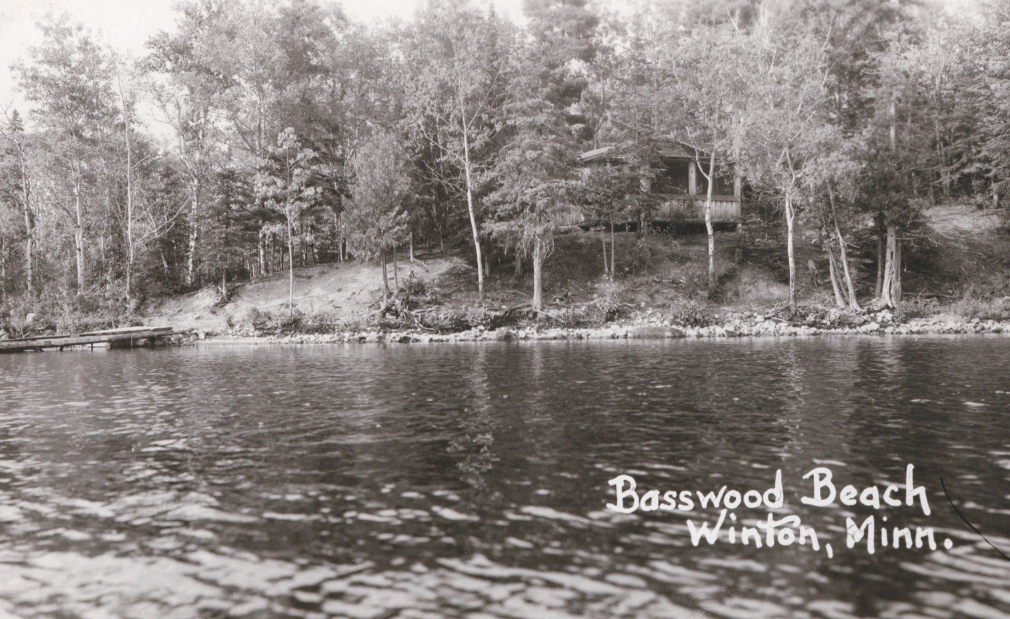
This article appeared in Wilderness News Summer 2011

